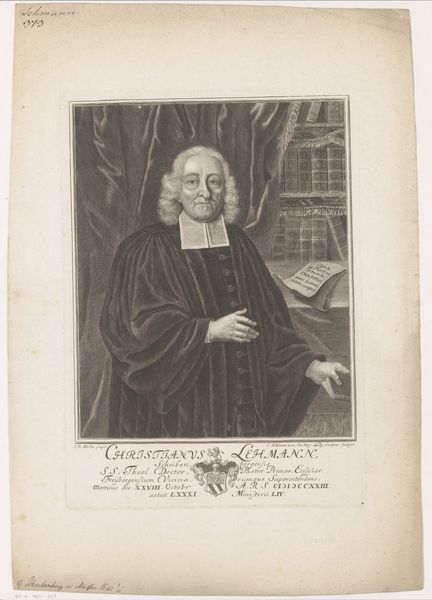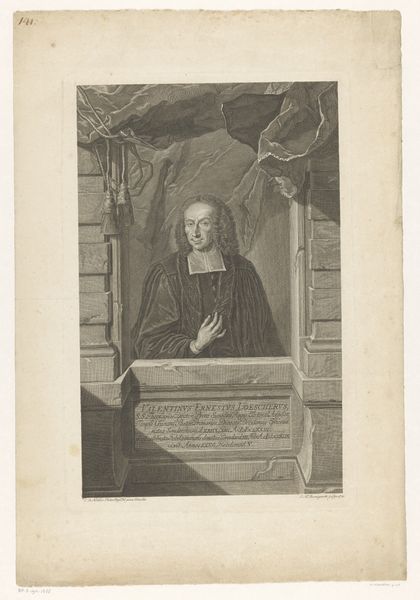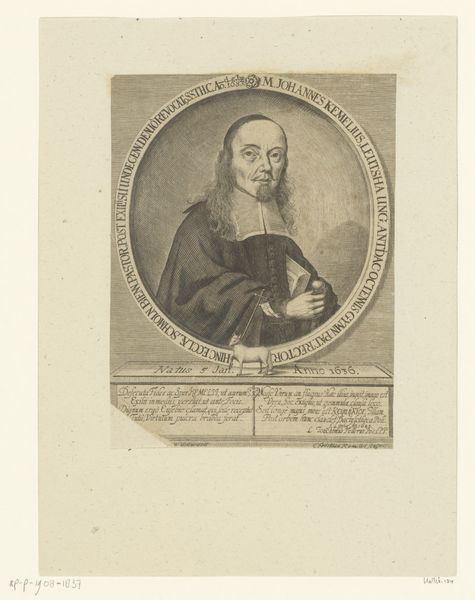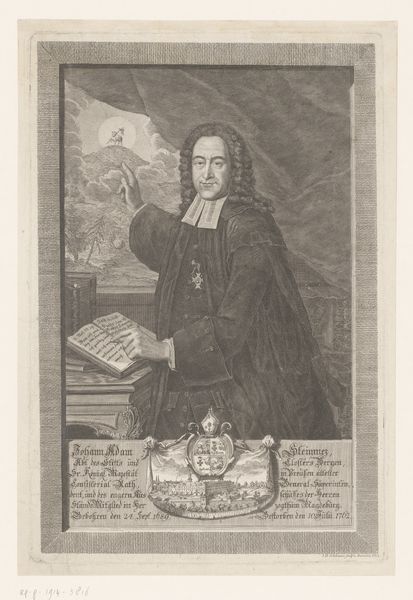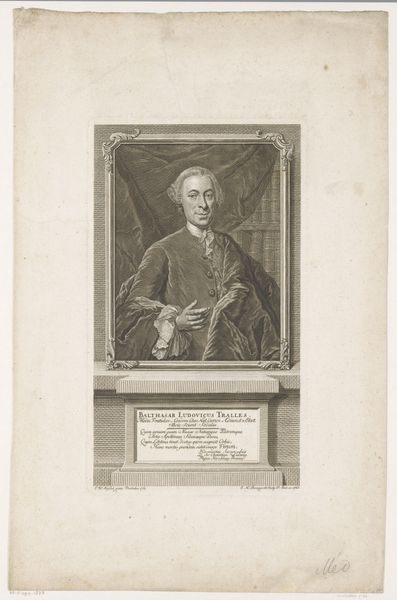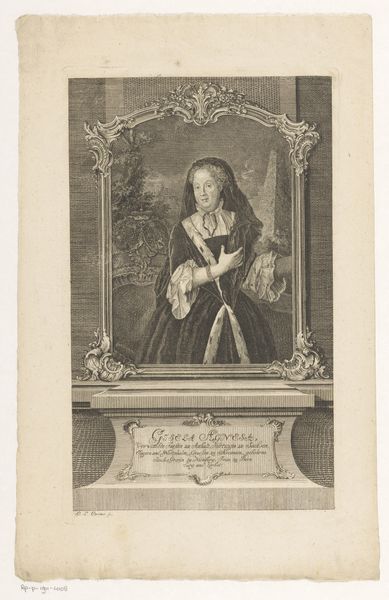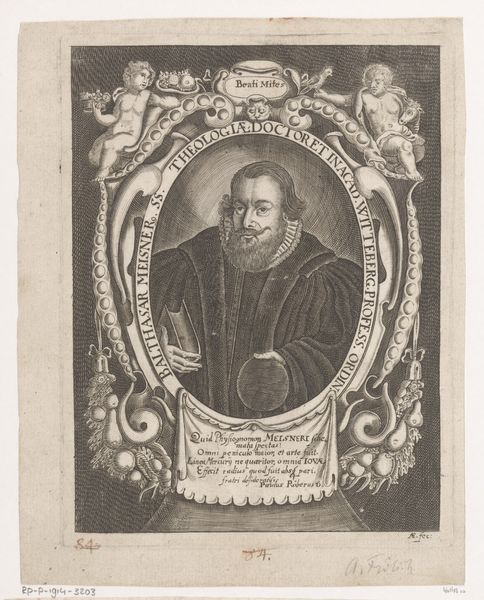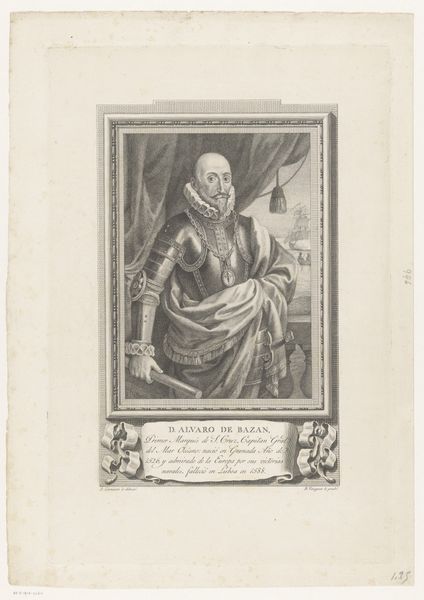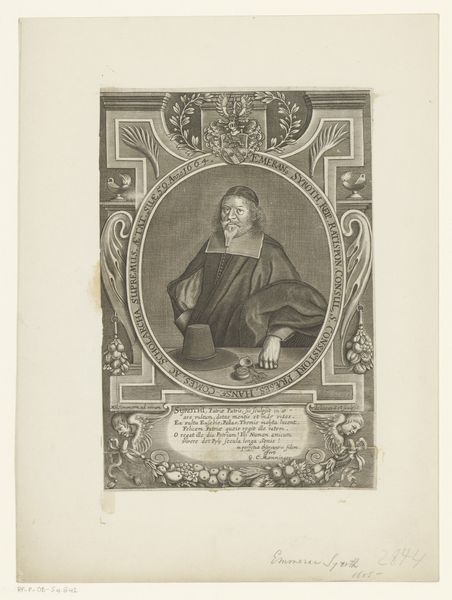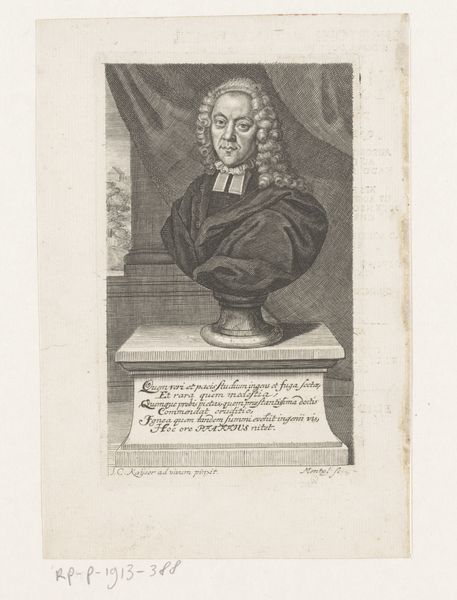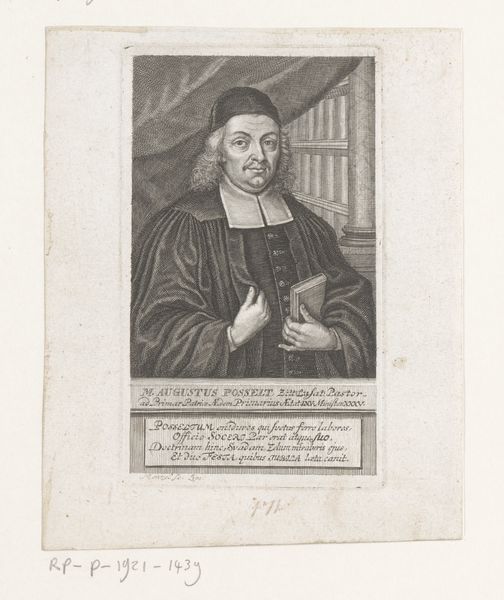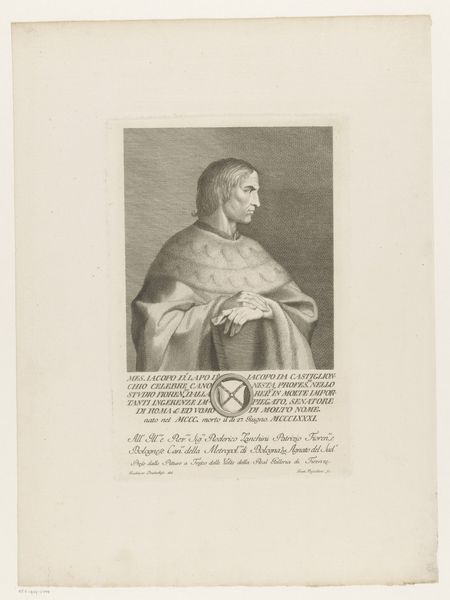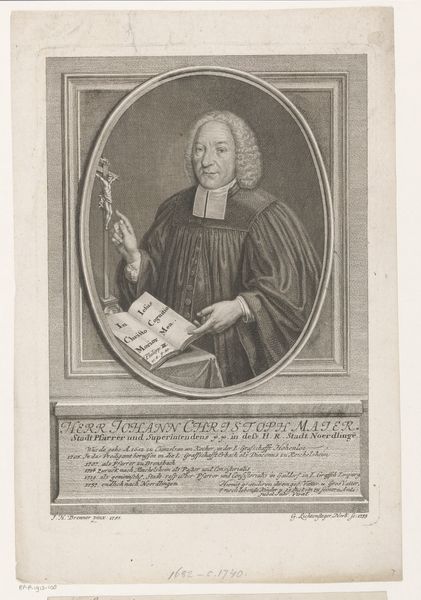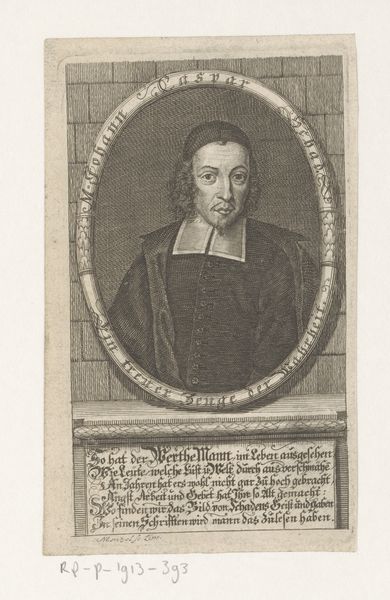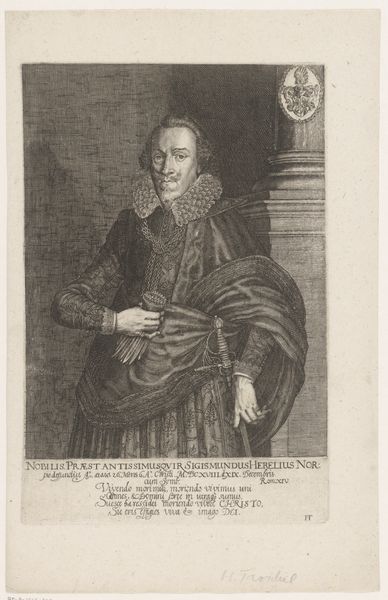
engraving
#
portrait
#
baroque
#
old engraving style
#
19th century
#
history-painting
#
engraving
Dimensions: height 189 mm, width 143 mm
Copyright: Rijks Museum: Open Domain
Editor: This engraving, *Portret van Gottlieb Köhler*, was created in 1686 by Johann Christoph Boecklin. It feels like more than just a likeness; it's making a statement about the subject. What story do you think this image is trying to tell us? Curator: Well, given the historical context, we can unpack quite a bit. This piece exists within the history of religious and political imagery of the period. Look at the open book referencing Ephesians 2:8 – faith as a gift, not earned – juxtaposed with the crucifix. Editor: I see it now, but what about the man himself? Curator: Think about who commissions these portraits and how they want to be seen. He’s presented not only as an individual but as a figure embodying religious authority and social standing, in a period where the Church was still a significant power broker. Consider how the print itself would circulate, reinforcing a specific public image. Does that make sense? Editor: Absolutely. It’s almost like a carefully constructed piece of propaganda, aimed at a specific audience. So, his clothing and even his gaze are carefully designed? Curator: Precisely. It’s not just about capturing a face; it's about defining a role and asserting influence through visual means. We must remember art of this period frequently played a role in building power structures and legitimizing authority. Editor: I hadn't thought about it that way before. I see now how the artist and his patron were deeply engaged with shaping perception and promoting certain religious views. Curator: Indeed. Looking at art through this lens allows us to understand its deeper societal impact. Editor: This gives me so much to think about, especially about the purpose and reception of images in shaping historical narratives. Thank you!
Comments
No comments
Be the first to comment and join the conversation on the ultimate creative platform.
